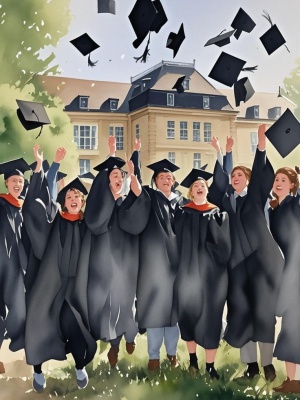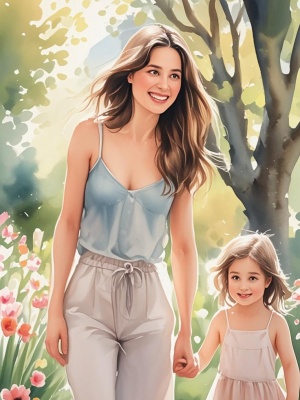The Art of Watercolor Portrait Painting: Techniques and Tips
Introduction
Watercolor portrait painting is a beautiful and challenging art form that captures the essence of human expression through delicate washes of color. Unlike other mediums, watercolor offers a unique transparency and luminosity that can bring portraits to life. Whether you're a beginner or an experienced artist, mastering watercolor portraits requires understanding specific techniques, materials, and approaches.
In this comprehensive guide, we'll explore the key aspects of watercolor portrait painting, from selecting the right materials to advanced blending techniques. For those interested in digital alternatives, check out our AI painting guide which explores modern approaches to portrait creation.
Essential Materials for Watercolor Portraits

Choosing the Right Paper
The foundation of any good watercolor portrait is quality paper. Cold-pressed paper with a weight of 300gsm is ideal as it provides enough texture for washes while preventing warping. For more detailed work, hot-pressed paper offers a smoother surface.
Watercolor Paints and Brushes
Professional-grade paints from brands like Winsor & Newton or Daniel Smith offer superior pigmentation. Essential brushes include:
- Round brushes (sizes 2-8) for details
- Flat wash brushes for backgrounds
- Mop brushes for soft blending
Fundamental Techniques

Wet-on-Wet vs. Wet-on-Dry
The wet-on-wet technique creates soft, blended edges perfect for skin tones, while wet-on-dry allows for sharper details in features. Many artists combine both methods in a single portrait.
Layering and Glazing
Building up transparent layers (glazing) creates depth in watercolor portraits. Each layer must dry completely before applying the next to prevent muddy colors. Our gallery showcases excellent examples of layered watercolor techniques.
Common Challenges and Solutions
Problem: Overworked Areas
Solution: Work quickly and confidently. Watercolor rewards decisive strokes. If an area becomes muddy, lift color with a clean damp brush or blot with tissue.

Problem: Skin Tone Accuracy
Solution: Mix colors from multiple pigments rather than using tube flesh tones. A basic skin tone mix might include:
- Yellow ochre as a base
- Alizarin crimson for warmth
- Ultramarine blue for shadows
Advanced Composition Tips
Creating Focal Points
Guide the viewer's eye by making the eyes the sharpest, most detailed part of the portrait. Soften edges in less important areas to create depth.
Negative Space Painting
Instead of painting the subject directly, paint around it to create the shape. This technique works particularly well for hair and clothing textures.
Conclusion
Watercolor portrait painting is a rewarding medium that combines technical skill with artistic expression. By mastering fundamental techniques and understanding how to solve common problems, artists can create stunning, lifelike portraits. Remember that practice is essential - each painting teaches valuable lessons.
For those interested in exploring digital alternatives or enhancing traditional watercolor work, our portrait to art detail guide offers innovative approaches. Whether working traditionally or digitally, the key to great portrait art lies in careful observation and patient practice.
External resources for further study include the Artist's Network for watercolor tutorials and Handprint for in-depth color theory information.